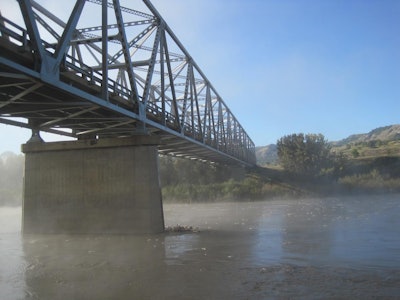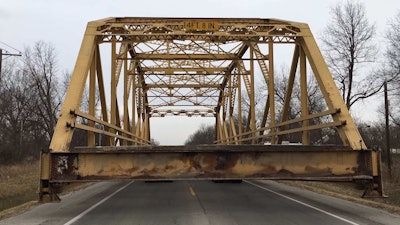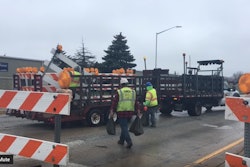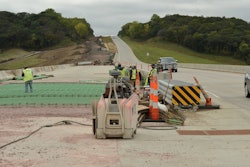 The Long X Bridge over the Little Missouri River in McKenzie County, North Dakota. Credit: Brent Hanson, USGS
The Long X Bridge over the Little Missouri River in McKenzie County, North Dakota. Credit: Brent Hanson, USGSIf you want a historic bridge, the North Dakota Department of Transportation has one it will give you and will even pay some of the removal costs.
Next year, the NDDOT plans to replace the Long X Bridge, a cantilevered, subdivided Warren through-truss structure that was constructed in 1959. The 969-foot-long, 30-foot-wide bridge spans the Little Missouri River on U.S. Highway 85 in McKenzie County and would remain in place until the new one is built, NDDOT says.
Under federal law, bridges that are eligible for listing on the National Register of Historic Places must first be made available for adoption before they can be removed or torn down, according to NDDOT.
The NDDOT says those interested in the bridge have until June 14 to apply for the entire structure or any of its segments. The agency will pay for disassembly, loading and transporting of a bridge segment within 100 miles.
Several states have bridge adoption programs and list bridges available on DOT websites.
 This historic bridge in Tulsa County, Oklahoma, travels to its new home in December, thanks to the ODOT’s adopt-a-bridge program.
This historic bridge in Tulsa County, Oklahoma, travels to its new home in December, thanks to the ODOT’s adopt-a-bridge program.The Oklahoma Department of Transportation successfully adopted out a 78-year-old K through-truss structure in December 2017. The bridge that was over Hominy Creek in Tulsa County got a new home on private land in the Skiatook area.
The Texas Department of Transportation has also had some success with its Historic Bridge Legacy program in having bridges placed in parks or for hike-and-bike trails.
The Montana Department of Transportation, in some cases, will provide any savings resulting from adopting the bridge to the adopting party through a Historic Preservation Grant. For bridges that are removed, the MDOT will pay for handling of the bridge spans and for removal of the bridge support units, things it would have done if it had to remove the bridge itself.
The Indiana Department of Transportation appears to have the most aggressive bridge-adoption program. The INDOT’s Historic Bridges Marketing Program website lists 45 bridges, with 19 of them labeled as “preserved,” which means commitments have been made to preserve the bridges in place or to move them and preserve them elsewhere.
The North Dakota bridge’s removal is part of a plan to widen U.S. 85 from two to four lanes for 62 miles through Starks, Billings and McKenzie counties, beginning at the highway’s interchange with Interstate 94.
NDDOT’s website lays out the details of the adoption process:
“The Long X Bridge is available to any responsible state, local or private agency willing to take ownership of, relocate and preserve the Long X Bridge in a new location (preference will be given to public entities). The adopting party would be responsible for maintaining the bridge segment(s) and would assume all future legal and financial responsibility associated with the bridge.”
For more details on the bridge adoption, click here.














